Briggs & Stratton Generators Review
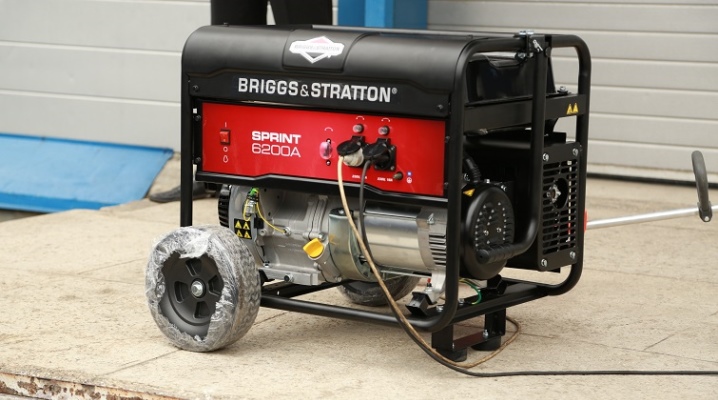
Not only the reliability of the power grid depends on the quality of the generator used, but also the fire safety of the facility where it is installed. Therefore, when going on a hike in nature or starting to create a power supply system for a summer house or an industrial facility, you should familiarize yourself with an overview of the main features of Briggs & Stratton generators.
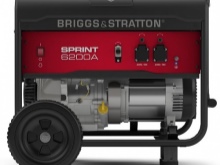
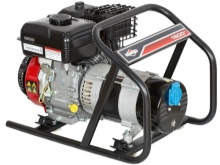
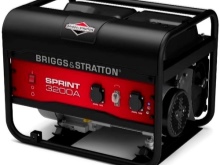
Peculiarities
Briggs & Stratton was founded in 1908 in the American city of Milwaukee (Wisconsin) and since its inception, it has been mainly engaged in the production of small and medium-sized gasoline engines for equipment such as lawn mowers, maps, car washes and power generators.
The company's generators gained wide popularity during the Second World War, when they were used for military needs. In 1995, the company went through a crisis, as a result of which it was forced to sell its division for the production of auto parts. In 2000, the firm acquired the Generator Division from the Beacon Group. After several more acquisitions of similar companies, the company became one of the leading manufacturers of power generators in the world.

The main differences between Briggs & Stratton generators and competitors' products.
- High quality - finished products are assembled at factories in the USA, Japan and the Czech Republic, which has a positive effect on their reliability. In addition, the company uses only the strongest and safest materials in its equipment, and its engineers are constantly introducing innovative technological solutions.
- Ergonomics and beauty - the company's products combine bold modern design moves with solutions proven over the years. This makes B&S generators very user-friendly and recognizable in appearance.
- Security - all products of the American company meet the fire and electrical safety requirements established by the laws of the USA, EU and Russian Federation.
- Affordable service - the company has an official representative office in Russia, and its engines are well known to Russian craftsmen, since they are installed not only on generators, but also on many models of agricultural equipment. Therefore, repairing a defective product will not entail problems.
- Guarantee - The warranty period for Briggs & Stratton generators is from 1 to 3 years, depending on the model of the installed engine.
- High price - American equipment will cost significantly more than the products of companies from China, Russia and European countries.
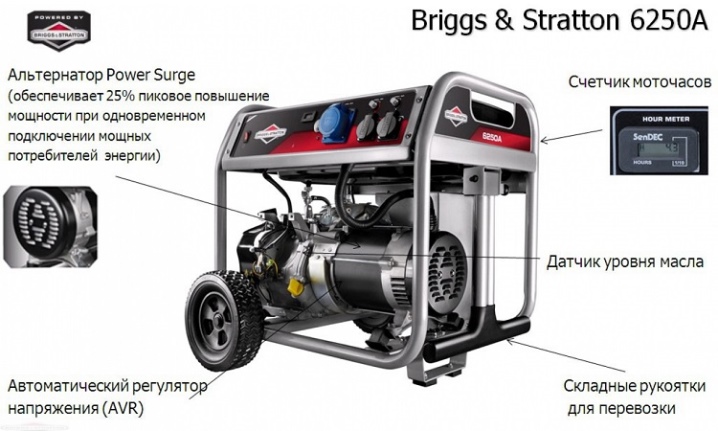
Views
B&S currently produces 3 main lines of generators:
- small-sized inverter;
- portable gasoline;
- stationary gas.
Let's consider each of these types in more detail.

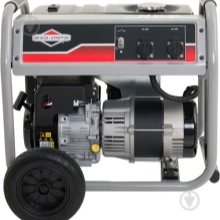
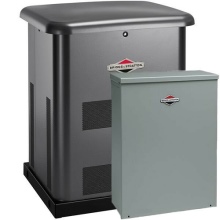
Inverter
This series includes gasoline low-noise portable generators with an inverter current conversion circuit. This design gives them a number of advantages over the classic design.
- Stabilization of the output parameters of the current - the deviations in the amplitude and frequency of the voltage in such a technique are noticeably lower.
- Saving gasoline - these devices automatically adjust the generation power (and, accordingly, fuel consumption) to the power of the connected consumers.
- Small size and weight - the inverter is much smaller and lighter than the transformer, which allows the generator to be smaller and lighter.
- Silence - automatic adjustment of the motor operation mode allows to reduce the noise level from such devices up to 60 dB (classical generators differ in noise in the range from 65 to 90 dB).
The main disadvantages of such a solution are the high price and limited power (there are still no serial inverter generators with a capacity above 8 kW on the Russian market).
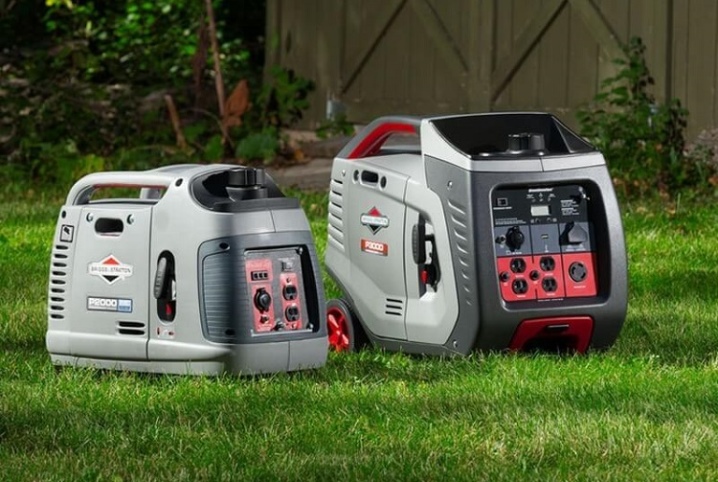
Briggs & Stratton produces such models of inverter technology.
- P2200 - budgetary single-phase version with a rated power of 1.7 kW. Manual launch. Battery life - up to 8 hours. Weight - 24 kg. Outputs - 2 sockets 230 V, 1 socket 12 V, 1 USB port 5 V.
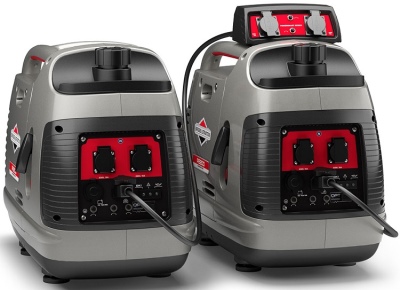
- P3000 - differs from the previous model in the nominal power of 2.6 kW and the duration of operation without refueling in 10 hours. Equipped with transport wheels, telescopic handle, LCD screen. Weight - 38 kg.
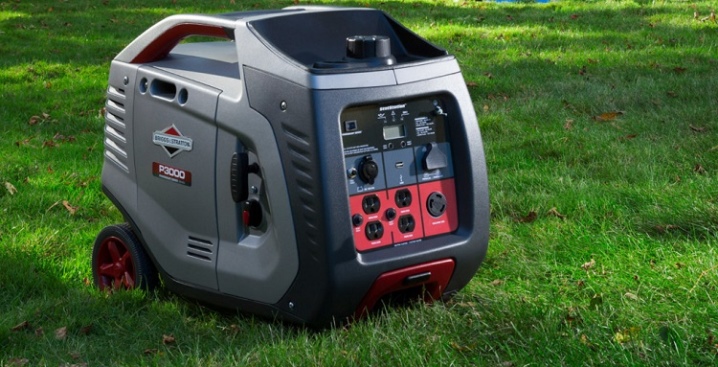
- Q6500 - has a rated power of 5 kW with an autonomous operation time of up to 14 hours. Outputs - 2 sockets 230 V, 16 A and 1 socket 230 V, 32 A for powerful consumers. Weight - 58 kg.
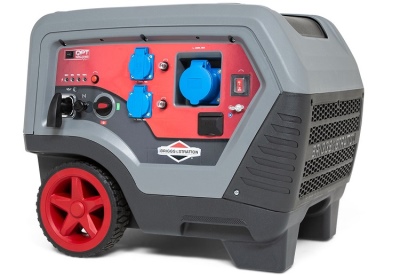
Gasoline
The B&S petrol generator models are designed in an open design for compactness and ventilation. All of them are equipped with the Power Surge system, which compensates for power surges when consumers start.
Most popular models.
- Sprint 1200A - budget tourist single-phase version with a capacity of 0.9 kW. Battery life up to 7 hours, manual start. Weight - 28 kg. Sprint 2200A - differs from the previous model with a power of 1.7 kW, a duration of operation until refueling in 12 hours and a weight of 45 kg.
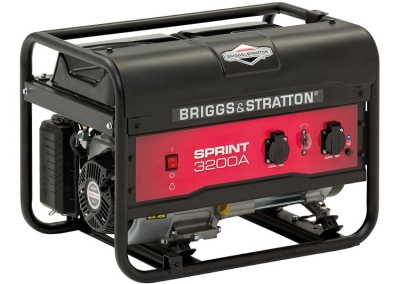
- Sprint 6200A - powerful (4.9 kW) single-phase generator providing up to 6 hours of autonomous operation. Equipped with transport wheels. Weight - 81 kg.
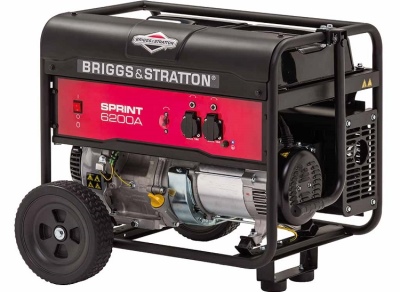
- Elite 8500EA - semi-professional portable version with transport wheels and heavy-duty frame. Power 6.8 kW, battery life up to 1 day. Weight 105 kg.
Started with an electric starter.
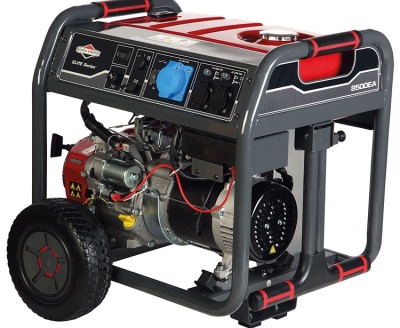
- ProMax 9000EA - 7 kW semi-professional portable generator. Working time before refueling - 6 hours. Equipped with an electric starter. Weight - 120 kg.
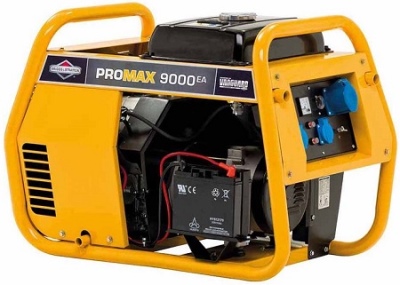
Gas
Gas generators of the American company are designed for stationary installation as backup or main and are made in a closed casing made of galvanized steel, ensuring safety and low noise level (about 75 dB). Key feature - the ability to work both on natural gas and on liquefied propane. All models are powered by a commercial grade Vanguard engine, which gives these generators a 3-year warranty.
The assortment of the company consists of such models.
- G60 is a budget single-phase version with a power of 6 kW (on propane, when using natural gas, it is reduced to 5.4 kW). Equipped with ATS system.
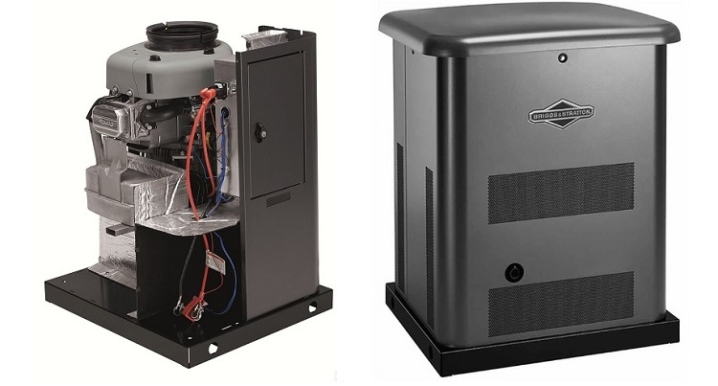
- G80 - differs from the previous model in increased nominal power up to 8 kW (propane) and 6.5 kW (natural gas).
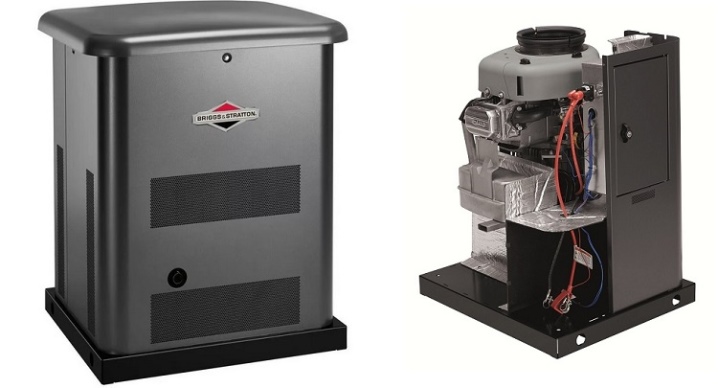
- G110 - a semi-professional generator with a capacity of 11 kW (propane) and 9.9 kW (natural gas).
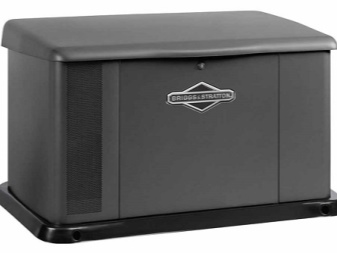
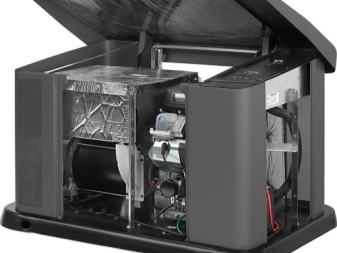
- G140 - professional model for industries and shops, providing a power of 14 kW when running on LPG and up to 12.6 kW when using natural gas.
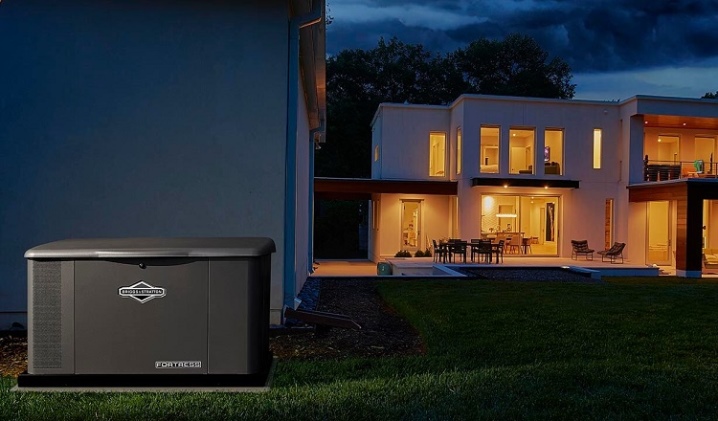
How to connect?
When connecting the generator to the consumer network, all the requirements set forth in the official instructions for its operation must be strictly followed. The basic rule that must be observed is that the power of the generator must be at least 50% higher than the total rated power of all electrical appliances connected to it. Switching the generator and the electrical network at home can be done in three main ways.
- With a three-position switch - this method is the simplest, most reliable and cheapest, but requires manual switching between the generator and the stationary power grid, if available.
- Contactor box - with the help of two connected contactors, it is possible to organize an automatic changeover system between the generator and the mains. If you equip it with an additional relay, you can achieve automatic shutdown of the generator when a voltage appears in the main power grid. The main disadvantage of this solution is that you will still have to manually start the generator when the main network is disconnected.
- Automatic transfer unit - some models of generators are equipped with a built-in ATS system, in this case it will be enough to correctly connect all the wires to the generator terminals.If the ATS is not included with the product, it can be purchased separately. In this case, the main thing is that the maximum switch current is higher than the maximum current that the generator can provide. The ATS system will cost significantly more than a switch or contactors.

In no case should you organize switching using two separate machines. - an error in this case can lead to both the connection of the generator to the disconnected power network with all its consumers (at best, it will stall), and to its breakdown.
Also, do not connect the generator leads directly to the outlet - usually the maximum power of the outlets does not exceed 3.5 kW.
In the next video you will find an overview of the Briggs & Stratton 8500EA Elite generator.













The comment was sent successfully.